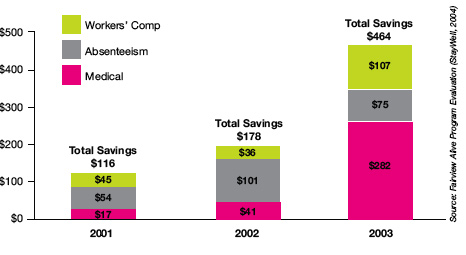 |
||
| |
|
|
Things you should know
Fines for federal immigration violations increased
Effective March 27, 2008, the civil monetary penalties assessed against employers who violate immigration laws were increased. Among the more significant fines under the revised regulation for knowingly hiring or unlawfully employing an undocumented worker, an employer will now face civil fines of: $375-$3,200 for each undocumented individual; $3,200-$6,500 for each undocumented individual, if the employer has previously been in violation; and $4,300-$16,000 for each undocumented individual, if the employer was subject to more than one cease and desist order.
While the regulation made no mention of an increase for this, employers who are convicted of having engaged in a pattern or practice of knowingly hiring unauthorized aliens or continuing to employ aliens, knowing that they are or have become unauthorized to work in the United States, may be fined up to $3,000 per unauthorized employee and/or face up to six months of imprisonment.
Fines increased also in the areas of record retention, antidiscrimination obligations, final notifications, and document fraud.
Workplace injuries linked to chronic health conditions
A study of workers at the Eastman Chemical Co. in Tennessee revealed that employees who reported workplace injuries had higher rates of chronic health conditions and risk factors than those who did not report an injury. Men 50 years and older and women 40 to 49 years old had the highest injury rates.
The group of injured employees had higher blood pressure readings, headache symptoms, depression and metabolic syndrome (a combination of disorders that increase the risk of developing both heart disease and diabetes that is more prevalent with age).
The researchers conclude that wellness initiatives to address health issues among workers should lead to a healthier, more productive workforce.
Study shows wellness programs pay off
According to a white paper, The Health and Economic Implications of Workplace Wellness Program, by the American Institute for Preventive Medicine in Farmington Hills, MI, a three-year study found that health risks decreased after the implementation of a comprehensive worksite wellness program. Each year, savings increased due to reduced health care costs, absenteeism, and Workers’ Comp claims. In the first year the total savings was $116 per participant and in the third year, it was $464 per participant.

Noting that an estimated 87.5% of health care claims are lifestyle-related, companies and employees receive many benefits from a workplace wellness program in addition to reduced costs. These include increased employee morale, improved employee health and increased productivity.
GAO identified $13 million in improper federal Workers’ Comp payments
One of our tenets is that mistakes are often made in Workers’ Comp. According to a report from the Government Accountability Office (GAO), the Department of Labor’s Office of Workers’ Compensation Programs (OWCP) is ineffective in managing improper payments. OWCP staff reported that quickly processing claims had a higher priority than detecting and recovering improper payments and that processing deadlines prevented payments from being quickly cancelled when the claimant returned to work or died. From a review of a sample of claims files for overpayments identified by OWCP in 2006, GAO found that many occurred because claimants did not notify OWCP in a timely manner when they returned to work. Errors also contributed to the overpayments.